Confit Pork
Confit Pork
to your Favourites...
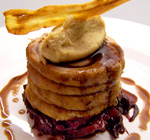
This medieval cooking method, originally used as a means of preserving food, produces pork belly that is extremely tender and absolutely delicious.
Ingredients
- 1.2kg pork belly
- 2kg goose fat (or 2 litres of vegetable oil)
- 70g shallot (2)
- 1 clove of garlic
- 8 pepper corns
- 1 sprig of rosemary
- 2 sprigs of thyme
- 2 bay leaves
- 8cm stick of cinnamon
- 1 teaspoon of salt
Preparation Time: 20 minutes
Cooking Time: 3 hours
Serves: 5
Method
- Pre-heat the oven to 140°c.
- Remove the skin from the pork belly (or ask your butcher to do this).
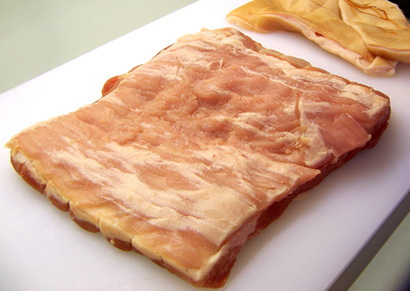
- Season the pork on both sides with salt & pepper and then roll it up and tie it tightly with string.
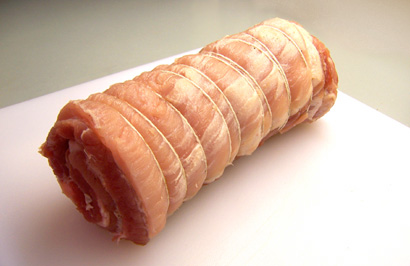
- Fry the pork in a pan until it is brown all over.
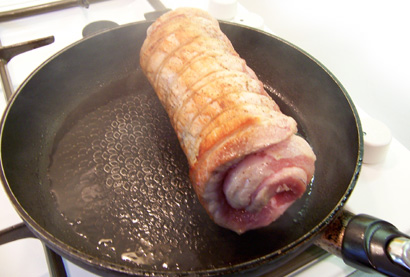
- Peel and quarter the shallot and lightly crush the garlic in its skin.
- In an oven-proof pot, put the goose fat, shallot, garlic and the rest of the ingredients.
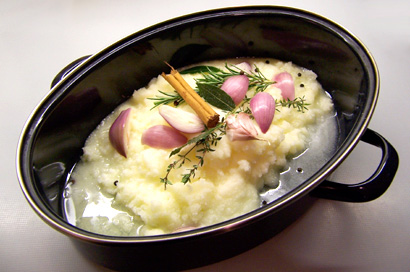
- Heat the pot on the stove until the fat starts to bubble.
- Carefully lower the pork into the fat, cover with the surface with a piece of greaseproof paper and put the lid on the pot.
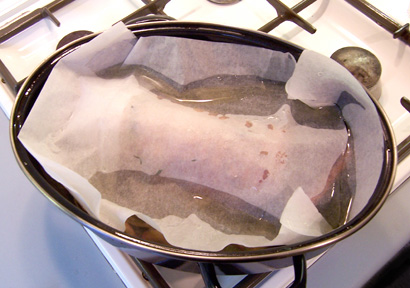
- Put the pot in the oven and cook for 3 hours.
- Carefully remove the pork from the fat and allow it to rest for 20 minutes before serving.
- To serve, remove the string and slice into portions. In the picture, we have served it on braised red cabbage with parsnip purée, a parsnip crisp and pork pan sauce.
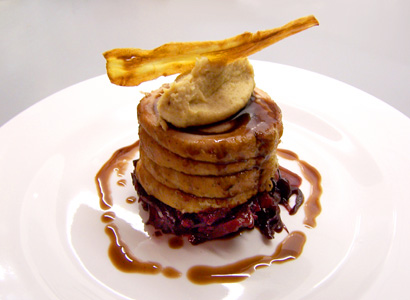
Useful Information
Can it be frozen? Yes.
Can it be prepared in advance? Yes, it can be finished up to 2 days in advance. Reheat it without the fat in a 180°c oven for 20 minutes.
Will leftovers be nice? Yes, for up to 3 days.
Notes
- The fat can be re-used by simply pouring it through a sieve to remove the debris, then allowing it to cool, pouring it back into its original container and storing it in the fridge. The fat will have taken on the flavour of the shallot, garlic and herbs, which can enhance any future cooking. It must not be kept for longer than 2 weeks as it will contain traces of pork.
- Confit was originally a medieval method of preserving fruit that was later extended to meat, by cooking it and storing it sealed in its own fat. These days, this cooking method is mainly used to keep the meat moist and for its flavour.
Sponsored Links

